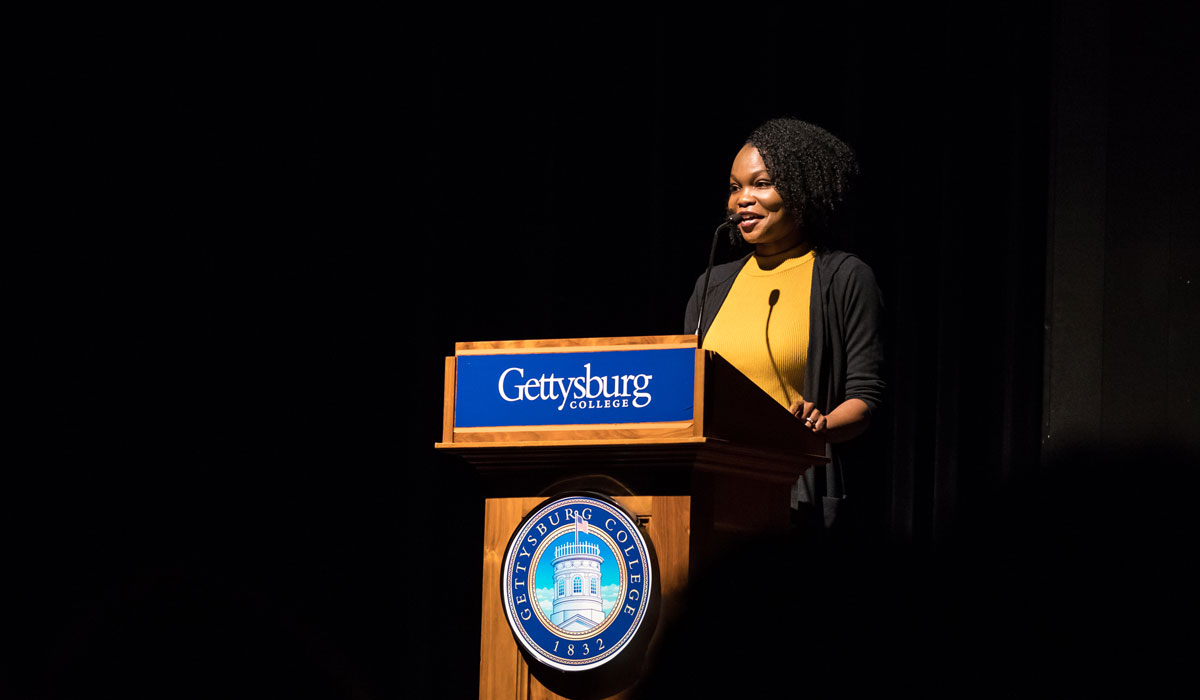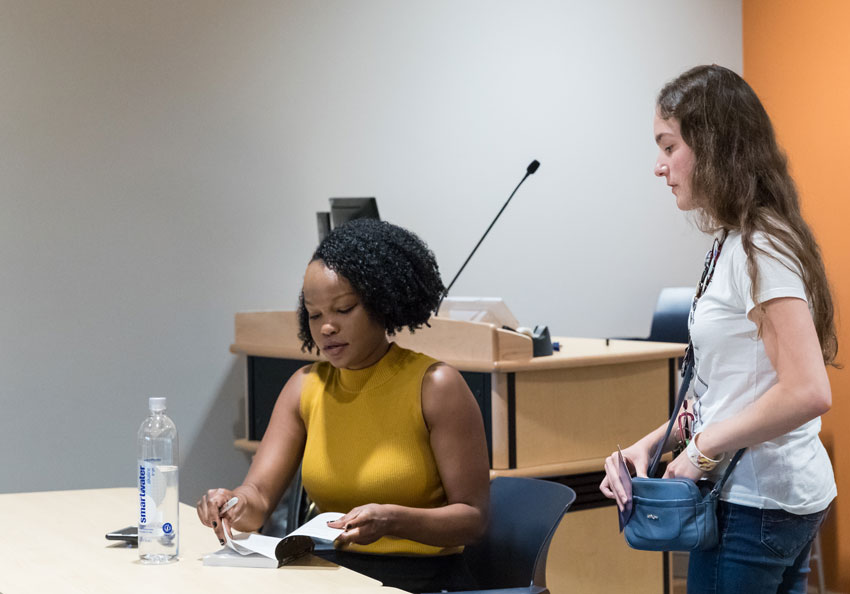

At Gettysburg College, students are encouraged to actively engage in critical thinking and discussions by transcending their comfort zones, welcoming new ideas, and embracing difference. The annual First-Year Common Reading Program is historically an opportunity for first-year students to unite in an academic discussion about a book with their peers and faculty across disciplines, fostering a sense of community and common identity.
This year’s reading was Heads of the Colored People, an anthology of short stories by Nafissa Thompson-Spires that delves into the topic of diversity and racial identity.
About the book and author
Through a mix of dark humor and lighthearted teasers, the stories in Heads of the Colored People examine the concept of black identity through relatable, and sometimes harrowing, depictions of the lives of black men, women, and children, who each grapple with their identity in a unique way.
While Heads of the Colored People doesn’t fully tell her stories and struggles as a black woman, Thompson-Spires said that she still sees herself in this book, especially in the reoccurring character Fatima. During her discussions with students on campus, she divulged that she grew up in Southern California and attended private schools, which were predominantly white. Even as she left California to pursue higher education, she recalls being only one of two black people in her entire PhD program.
“I had to learn to navigate all of the microaggressions and macroaggressions in this society and this world,” she said. “I had to find ways to not stay isolated.” This book gave her the chance to start conversations and build vocabulary for people who may have never thought about their identity or race, or for those who felt alone in their journeys.

Dialogue about diversity
During her lecture on campus, faculty and students listened intently as Thompson-Spires brought the words off the page by passionately reading excerpts from her book. A stunned silence fell after listening to a portion of the book recounting the death of a young black man, while the following excerpt was met with laughter—showcasing the full spectrum of emotions prevalent in the collection of stories. Thompson-Spires showed her versatility in writing and her ability to connect with her readers on a deeper level, which is something she hoped to accomplish through her work.
“What was always important to me was to put good art out into the world, particularly for a black audience,” she said. “The most important thing to me about my writing is that people have book friends [from which to draw] company.”
To extend the discussion about Heads of the Colored People beyond her lecture, Thompson-Spires held an additional question and answer panel and visited several First-Year Seminar classes to speak intimately with students and faculty. Over the course of two days, she encouraged those who read the book to acknowledge the reality that surrounds racial biases while also connecting its contents to their own lives.
“Race is always going to be a social construct and the systemic issues we have will always be a problem [we need to address],” Thompson-Spires said.
At Gettysburg College, these integral discussions are fostered through programs, coursework, and events such as these.
By Kimberly Monitto ’20
Photos by Shawna Sherrell
Posted: 09/26/19


